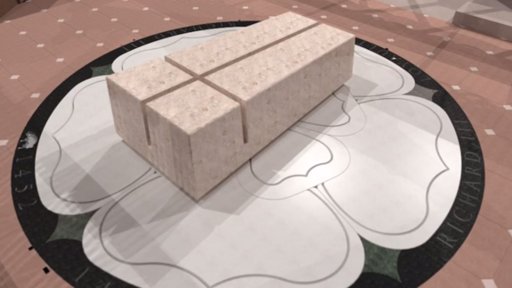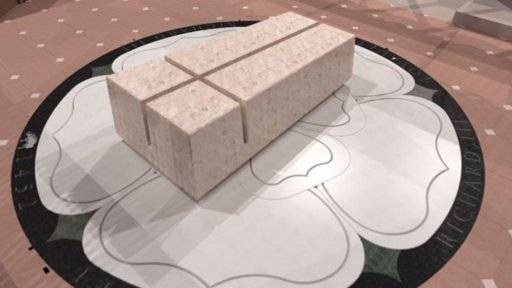Richard III: a maligned king’s reburial becomes a sordid affair
Source: ca.news.yahoo.com
The discovery of King Richard III’s bones in a shallow grave started a tug-of-war over where he should be buried. And some now say the design for his tomb is not fit for a monarch.
The shallow dirt grave into which King Richard III’s body was hurriedly tossed, and centuries later covered up by a concrete parking lot, must top the list of ignominious royal burials.
It was inevitable, perhaps, that its discovery last September would be followed by calls for the 15th-century monarch, immortalized by Shakespeare as a miserable, murderous wretch, to finally receive a proper interment, with the tomb, ceremony, and dignity usually afforded a king.
However, what’s happened so far has been short on dignity.
“It has got a bit grubby,” says David Grummitt, a specialist in late medieval and early Tudor history at the University of Kent. “I don’t know if anyone has really thought about what Richard III himself would have wanted.”
In the year since the bones were exhumed in Leicester by archaeologists at the city’s university, a series of bitter disputes has complicated the process of laying the king to rest in a new grave.
A demand by relatives of the king that he be buried in the northern city of York rather than Leicester, in the middle of England, has led to the courts. A judge has warned of a looming “War of the Roses 2.”
“The whole point of finding Richard was to honor him,” says Phil Stone, chairman of the Richard III Society, which has long sought to restore the good name of England’s most maligned monarch. “And to do whatever is done with dignity and sanctity.”
Last week, a plan for Richard III’s new tomb was unveiled by Leicester Cathedral, a magnificent Gothic building whose spires shadows Richard III’s grave. Members of the Richard III Society were so appalled by the design, however, that they asked for the money they had donated to the project— around £40,000, or $64,500 – to be returned.
Meanwhile, anonymous blog posts have thrown medieval-sounding insults at some players in the drama, accusing them of lunacy.
Richard III was killed near Leicester in 1485, when the armies of the House of Lancaster – led by Henry Tudor, who became Henry VII – and the House of York – led by Richard – fought the last battle in the War of the Roses, a decades-long civil conflict. Richard’s death ushered in the rule of the Tudors, which lasted until Elizabeth’s death in 1603.
His body was buried in Grey Friars, a Franciscan priory in Leicester. Less than a century later, when Henry VIII created the Anglican church, ending England’s loyalty to the Vatican, the priory was demolished. In the centuries that followed, a mansion, a road, a school and then a municipal parking lot were built by turns above Richard’s grave.
With the help of William Shakespeare, Richard III came to be remembered as the Tudors wanted him to be: a villainous wretch who murdered his nephews, known as the “Princes in the Tower.”
Since 1924, the Richard III Society has worked to keep alive what it says is a truer memory of the king as a fair and decent ruler, who brought in special courts to hear the grievances of the poor. Since the discovery of his bones, the society’s membership has swelled by nearly half, and it’s now host to 4,000 members across the world.
[...]
Read the full article at: ca.news.yahoo.com

From Wikipedia: David Garrick as Richard III is a painting dating from 1745 by the English artist William Hogarth.
The painting shows the actor and stage manager David Garrick in the role of Richard III in Shakespeare’s play entitled Richard III. It depicts a dramatic moment in the play on the eve of the Battle of Bosworth Field. The king, who had been asleep in his tent on the battlefield, has just woken from a dream in which he has seen the ghosts of the victims he has previously murdered.
READ: King Richard III’s face recreated from skull






















